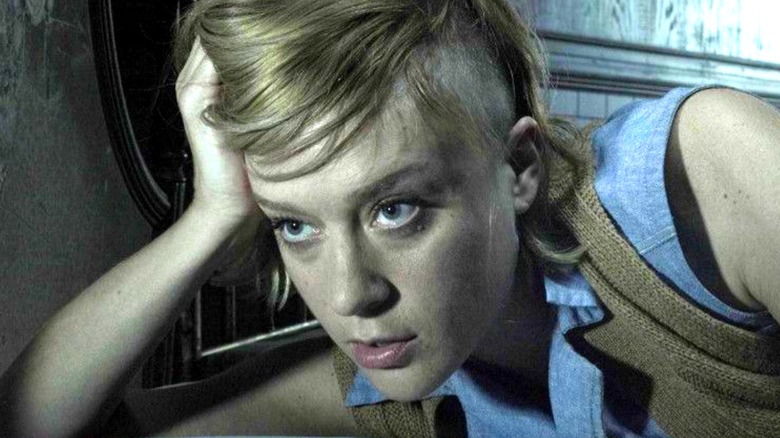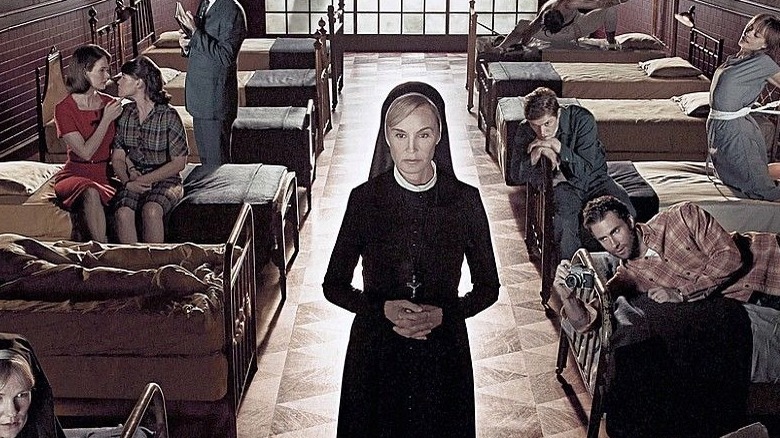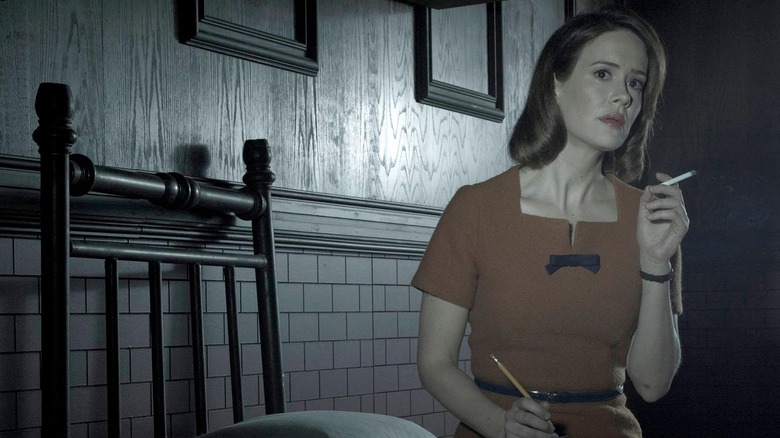What Fans Notice After Rewatching American Horror Story: Asylum
One of the strengths of the venerable "American Horror Story" franchise is the anthology series' ability to reinvent itself season after season — from stories of haunted houses and witches' covens to ghostly hotels and the end of the world itself. Created by Ryan Murphy and Brad Falchuk, "AHS" was intended to be a love letter to classic horror films, stories, folklore, and urban legends. The creators of the series and the cast produce a self-contained horror story each season within the greater framework of the show, and all of them have met with critical and popular acclaim — in no small part due to the memorable "American Horror Story" characters.
With the series renewed through its 13th season, fans have taken some time to reflect on the earlier seasons of the show, and these reflections don't always yield flattering insights. While initially released to both commercial success and critical acclaim, the second season, entitled "American Horror Story: Asylum," has drawn a bit of unflattering fan reappraisal in the years since its initial release.
Asylum is vsually and narratively complicated
Set in the year 1964 at the Briarcliff Institution, "American Horror Story: Asylum" is the story of the staff and patients at this troubled mental institution. The series concerns the pious Sister Jude (Jessica Lange) who administrates the asylum, as well as two new inmates: Lana Winter (Sarah Paulson) and Kit Walker (Evan Peters). Kit is accused of being a serial killer known as Bloody Face in the wake of his wife's disappearance, and Lana is a crusading journalist who was about to expose corruption at Briarcliff only to be committed by Sister Jude for the high crime of being a lesbian in the 1960s.
In a recent Reddit post, user DanaAndrews said that the second season of "American Horror Story" hasn't aged well in their estimation. They argue that the season has "So many dutch angles it might as well wear wooden shoes. Too many characters spouting more expository dialog than doing something about it. Complicated storylines that make the better ones get lost in the process."
Unsurprisingly, the fandom had a lot of conflicting feels about this hot take.
This season of American Horror Story has many moving parts
Responses to DanaAndrews were mixed. Some agreed with their initial assessment of "American Horror Story: Asylum." Reddit user Dooxh commented: "I agree! from the first time I watched asylum, I hated it and had to force myself to finish it. the messy storyline, unfinished topics, etc. made it unlikeable."
But user FauxVampire defended the series' narrative choices, arguing, "I think the filming is meant to be messy and disorienting, 'cause that's how the patients feel being in the asylum."
"American Horror Story: Asylum" borrows from the real-life medical and institutional terrors of the period. Over the course of the season, "Asylum" works to challenge the viewers perceptions of reality. As FauxVampire wrote, the Dutch angles used in the series are meant to establish a disorienting mood, to give the audience themselves the feeling of being off kilter, without any assurance that what they're seeing and experiencing can be entirely trusted. "American Horror Story: Asylum" takes the audience on a journey that blends supernatural menace with institutional cruelty, and shows us that sometimes it isn't the evil from without that's truly frightening, but rather the evil from within.


